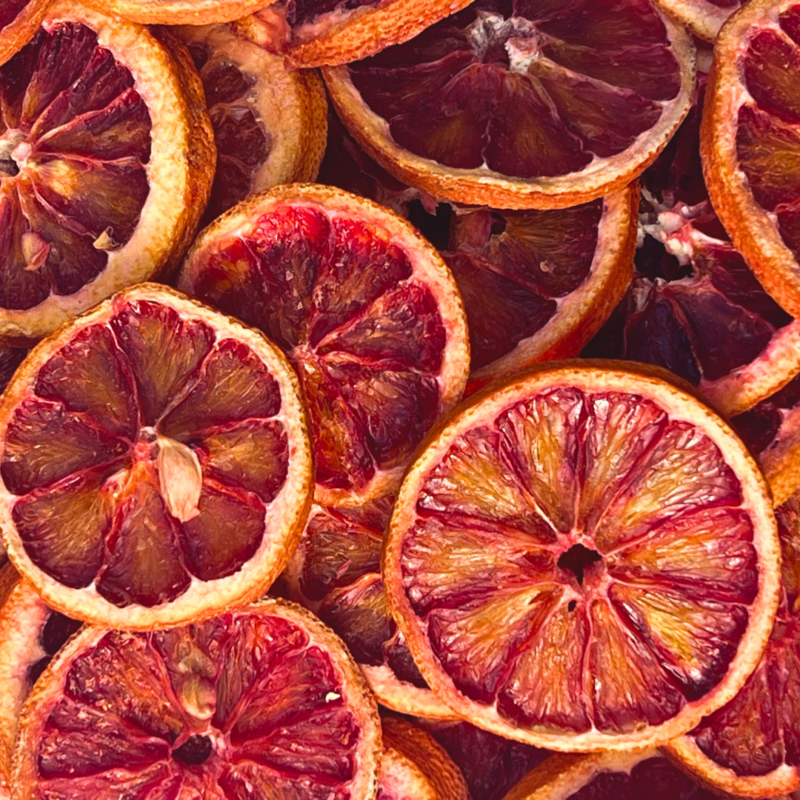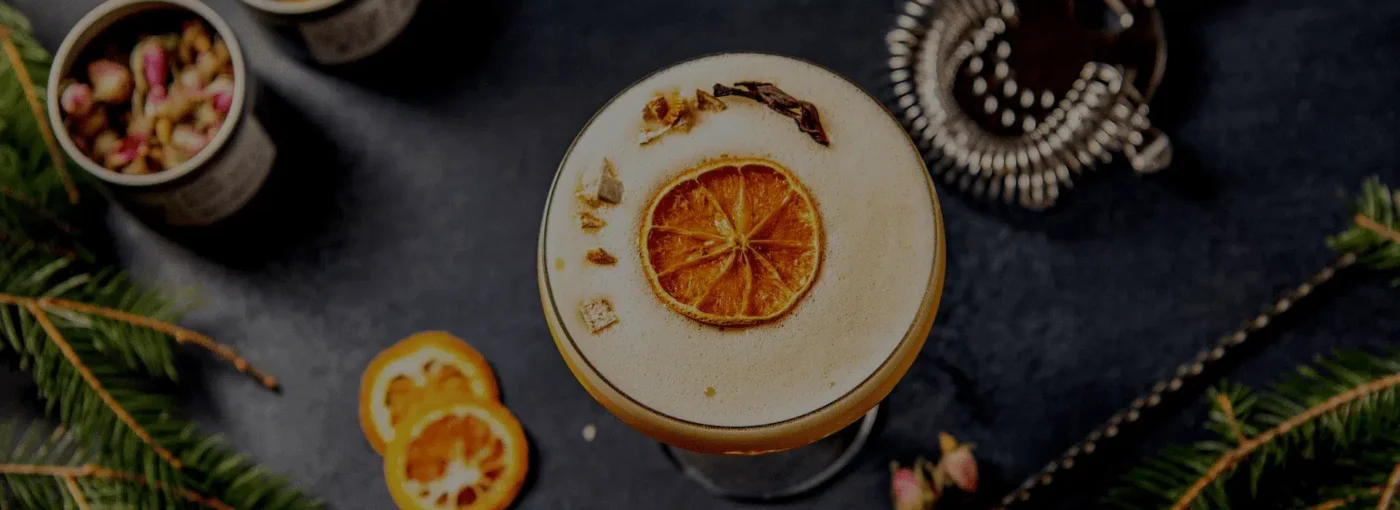At Drink Botanicals Ireland, we are dedicated to providing our customers with the finest ingredients. Explore our range of dried garnishes and botanicals below to learn more about what makes them exceptional!
Hibiscus Flower
Our dried hibiscus flowers are a delightful way to infuse your culinary and beverage creations with a tangy, floral flavor and vibrant color. Sourced from the finest hibiscus blooms and carefully dried to preserve their natural qualities, these flowers are perfect for adding a unique and refreshing twist to your recipes.
Dried hibiscus flowers offer a tart, cranberry-like flavor with subtle floral notes, making them a versatile ingredient in both sweet and savory dishes. Their natural acidity can brighten up teas, cocktails, and desserts, while also adding depth to savory dishes like marinades, sauces, and salads. The vivid red color of hibiscus infusions not only enhances the visual appeal of your creations but also brings a refreshing taste that’s both bold and invigorating.
Visually, dried hibiscus flowers are as striking as they are flavorful. Their deep red petals make them an attractive garnish for both food and drinks, and their color infuses beautifully into liquids, creating stunning red hues. Whether you’re steeping them in hot water to create a vibrant hibiscus tea, using them to add a tangy kick to cocktails, or incorporating them into desserts like sorbets and jellies, these flowers bring a unique and eye-catching element to your culinary repertoire.
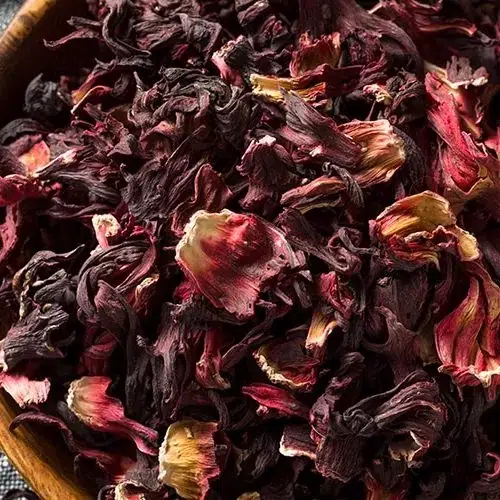
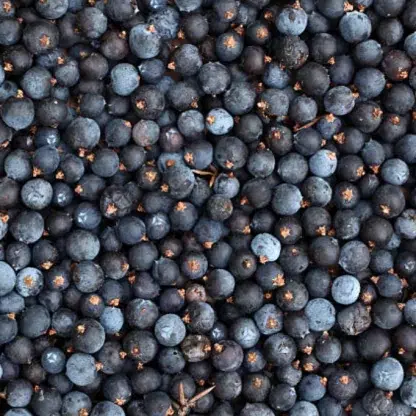
Juniper Berries
Juniper berries offer a distinctive, aromatic flavor that is essential for adding depth and complexity to a variety of culinary and beverage creations. Harvested from the finest juniper plants and carefully dried to preserve their unique characteristics, these berries are perfect for those seeking to enhance their recipes with a bold and slightly piney flavor.
Juniper berries are renowned for their sharp, slightly sweet, and pine-like taste, with hints of citrus and spice. This complex flavor profile makes them a key ingredient in crafting gin, where they lend their characteristic taste to the spirit. Beyond beverages, juniper berries can be used to add a unique twist to both savory and sweet dishes. They pair particularly well with meats, especially game and lamb, adding a robust flavor that complements hearty, rich foods. In baking, they can bring an unexpected depth to spiced cakes and cookies.
Visually, these small, deep purple-blue berries add an intriguing touch to any dish or drink. Their round shape and dark colour make them a striking garnish, while their aromatic oils release a fresh, woodsy scent that enhances the sensory experience of your culinary creations.
Chilli Rings
Our dried chilli rings are the perfect way to infuse your culinary creations with a bold, spicy kick. Sourced from the finest quality chilies, these vibrant rings bring a fiery edge to everything from cocktails to gourmet dishes, whether you’re crafting a classic gin and tonic or experimenting with a new recipe.
Chilli rings offer an intense flavor that delivers a sharp, spicy bite, perfectly complementing a wide range of ingredients and recipes. Beyond just heat, these chilli rings add a rich, smoky aroma, enhancing the overall sensory experience of your creations. Their versatility allows you to easily adjust the spice level to suit your taste, whether you’re aiming for a subtle hint of spice or a more powerful punch. They’re ideal for adding excitement to cocktails, mocktails, and culinary dishes alike.

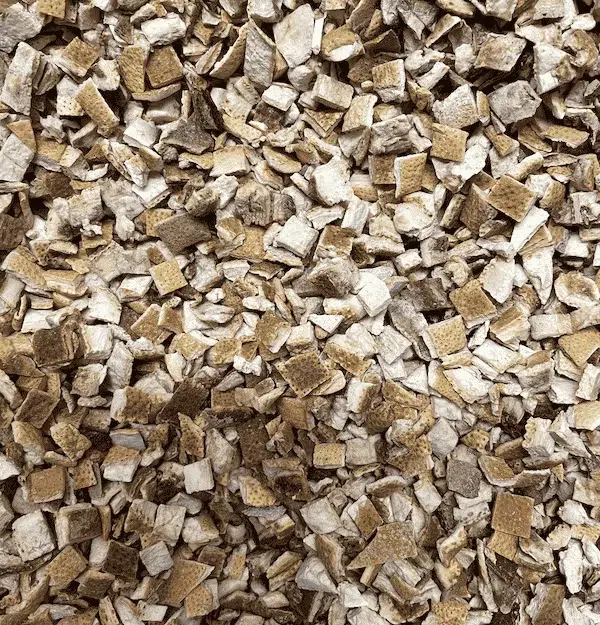
Grapefruit peel
Our dried grapefruit peel adds a vibrant, citrusy twist to a wide range of culinary and beverage creations. Carefully sourced and dried to preserve its natural essence, this peel is perfect for those looking to infuse their recipes with the fresh, tangy flavor of grapefruit.
Dried grapefruit peel brings a zesty, slightly bitter note that beautifully complements both sweet and savory dishes. Its refreshing citrus flavor can enhance cocktails, teas, desserts, and even marinades, adding a layer of complexity to your culinary endeavors. The natural oils in the peel release a bright aroma, instantly uplifting the sensory appeal of your creations.
In addition to its flavor, dried grapefruit peel adds visual appeal with its distinctive orange-pink hue, making it an attractive garnish or ingredient in any dish or drink. Whether you’re using it as a garnish for a gin and tonic, steeping it in hot water for a refreshing tea, or incorporating it into a dessert for a burst of citrus, this versatile peel delivers a taste of sunshine in every use.
Ginger Root Cuttings
Our dried ginger root brings a warm, spicy depth to a wide range of culinary and beverage creations. Sourced from the finest ginger and carefully dried to preserve its robust flavor, this versatile ingredient is perfect for those looking to add a touch of spice and complexity to their recipes.
Dried ginger root offers a distinctive, zesty heat that pairs beautifully with both sweet and savory dishes. Its rich, aromatic flavor can enhance everything from cocktails and teas to baked goods and savory sauces. The natural warmth of ginger adds a comforting, invigorating quality to your creations, making it a staple in kitchens and bars alike.
In addition to its bold flavor, dried ginger root brings a rustic, earthy visual appeal that can serve as both a functional ingredient and a decorative garnish. Whether you’re infusing it into a hot toddy, incorporating it into a marinade for meats, or adding it to a dessert for a spicy kick, dried ginger root elevates the flavor profile of any dish or drink.


Green Cardamon Pods
Our green cardamom pods bring an exotic, aromatic flavor to a wide variety of culinary and beverage creations. Harvested from the finest sources and carefully dried to retain their unique qualities, these pods are perfect for adding a touch of elegance and complexity to your recipes.
Green cardamom is known for its sweet, floral aroma with hints of citrus and spice. This versatile spice can enhance both sweet and savory dishes, making it a favorite in kitchens around the world. Whether you’re crafting a fragrant chai tea, infusing a syrup for cocktails, or adding depth to a curry or dessert, green cardamom pods offer a sophisticated flavor that elevates any dish.
Beyond their flavor, these vibrant green pods add a visually appealing touch, making them ideal for both garnishing and infusing. The pods can be used whole for a subtle flavor or crushed to release the seeds inside for a more intense taste. Their complex flavor profile pairs beautifully with a variety of ingredients, from creamy desserts like rice pudding and custards to savory dishes like stews and biryanis.
Star anise
Our star anise offers a bold, licorice-like flavor that adds an aromatic depth to a wide range of culinary and beverage creations. Sourced from the highest quality spice farms, these beautiful star-shaped pods are carefully dried to preserve their intense flavor and captivating aroma, making them an essential ingredient for those seeking to enhance their recipes with a touch of the exotic.
Star anise is renowned for its warm, sweet, and slightly spicy flavor, reminiscent of licorice and cloves. This versatile spice is a key component in many global cuisines, particularly in Asian cooking, where it adds complexity to broths, soups, and sauces. It’s also a popular choice in baking and beverage preparation, bringing a unique, aromatic flavor to everything from mulled wine and spiced cider to cookies and cakes.
Visually stunning, star anise adds not only flavor but also a decorative touch to your creations. Its star-shaped pods make an attractive garnish for both food and drinks, enhancing the overall presentation of your dish. Whether you’re simmering it in a slow-cooked stew, steeping it in a tea, or incorporating it into a dessert, star anise imparts a distinctive, warming flavor that elevates any recipe.

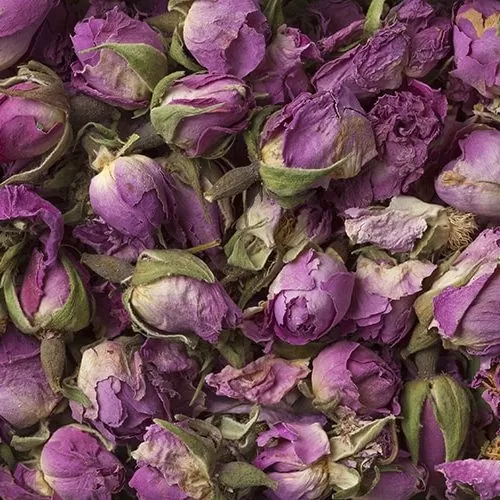
Dried Pink Rose Buds
Our star anise offers a bold, licorice-like flavor that adds an aromatic depth to a wide range of culinary and beverage creations. Sourced from the highest quality spice farms, these beautiful star-shaped pods are carefully dried to preserve their intense flavor and captivating aroma, making them an essential ingredient for those seeking to enhance their recipes with a touch of the exotic.
Star anise is renowned for its warm, sweet, and slightly spicy flavor, reminiscent of licorice and cloves. This versatile spice is a key component in many global cuisines, particularly in Asian cooking, where it adds complexity to broths, soups, and sauces. It’s also a popular choice in baking and beverage preparation, bringing a unique, aromatic flavor to everything from mulled wine and spiced cider to cookies and cakes.
Visually stunning, star anise adds not only flavor but also a decorative touch to your creations. Its star-shaped pods make an attractive garnish for both food and drinks, enhancing the overall presentation of your dish. Whether you’re simmering it in a slow-cooked stew, steeping it in a tea, or incorporating it into a dessert, star anise imparts a distinctive, warming flavor that elevates any recipe.
Dehydrated Blood Orange Slices
Our dehydrated blood orange slices are a striking addition to any culinary or beverage creation, offering both a visually stunning garnish and a burst of vibrant citrus flavor. Carefully sliced and dried to preserve their deep red color and tangy taste, these blood orange slices are perfect for enhancing the flavor and presentation of your recipes.
Dehydrated blood orange slices provide a sweet-tart citrus flavor with a hint of berry-like richness, making them a versatile ingredient for both sweet and savory dishes. Their unique flavor profile pairs beautifully with a variety of ingredients, adding a refreshing citrus note that can elevate cocktails, desserts, and even main courses. Whether you’re infusing them into a cocktail, using them to garnish a dessert, or incorporating them into a savory dish for a pop of flavor, these slices bring a sophisticated touch to any creation.
Visually, the deep red and orange hues of the dehydrated blood orange slices make them an eye-catching garnish that adds elegance and color to your presentations. Their beautiful appearance and distinct flavor make them ideal for decorating cakes, adorning cocktails, or even adding to cheese boards and salads. The natural oils in the orange peel also release a fragrant aroma, enhancing the sensory experience of your dishes and drinks.
